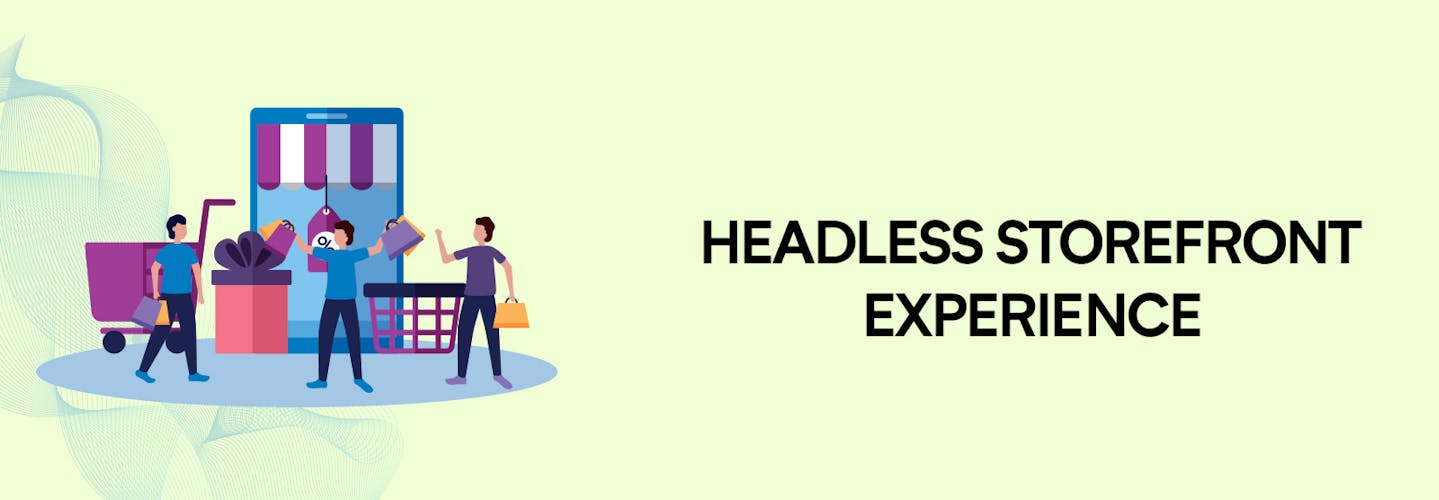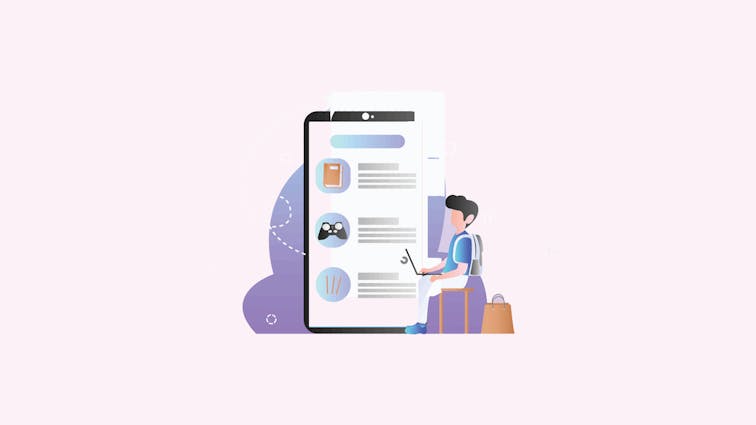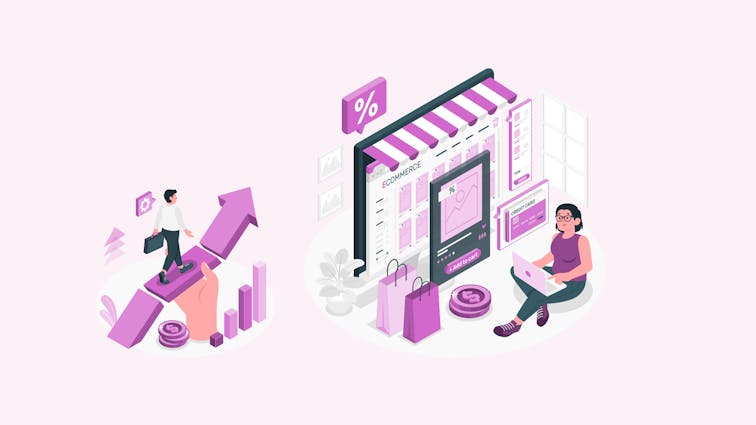
Headless Storefront Experience: A Game-Changer for SMEs
Are you struggling to keep up with the ever-evolving landscape of eCommerce? You’re not alone.
Many businesses find it challenging to deliver seamless, personalized shopping experiences across multiple channels.
This problem is further compounded by traditional commerce systems that limit flexibility and scalability.
But what if there was a solution? Welcome to the world of headless storefront experience.
This innovative approach decouples the frontend and backend of your eCommerce platform, offering unparalleled customization and the ability to scale with ease.
Dive into this article to explore how headless storefront experience can revolutionize your eCommerce strategy.
Defining Headless Storefront Experience

In the world of e-commerce, the term “headless” might seem a bit perplexing. But don’t worry, it’s not as gruesome as it sounds!
In simple terms, a headless storefront experience refers to a setup where the front-end of a website (the “head”) is decoupled from the back-end.
This means the presentation layer, or what the customer sees and interacts with, is separate from the commerce layer, where all the data and business logic reside.
Why is this important, you ask? Well, this separation allows developers to make changes to the front-end without affecting the back-end, and vice versa.
It provides a high degree of flexibility and customization, enabling businesses to deliver unique, tailored shopping experiences to their customers.
The Evolution of Retail Technology
Now, let’s take a step back and look at how retail technology has evolved over the years.
Remember the days when brick-and-mortar stores were the only shopping option?
Fast forward to today, and we’re living in a world where you can buy anything from a car to a carton of milk with just a few clicks or taps.
The advent of e-commerce platforms marked a significant shift in retail technology.
But as consumer expectations continued to rise, businesses needed more than just a basic online store.
They needed to provide seamless, personalized experiences across multiple channels - from websites and mobile apps to social media and IoT devices.
This is where headless commerce comes in. By decoupling the front-end and back-end, businesses can innovate faster, create unique customer experiences, and stay ahead in the ever-changing retail landscape.
Why Headless Commerce is Gaining Momentum
So, why is headless commerce gaining momentum? The answer lies in the rapidly changing digital landscape and rising consumer expectations.
Today’s consumers demand seamless, personalized shopping experiences across all touchpoints. They want fast, responsive websites, personalized content, and the ability to shop anytime, anywhere.
Headless commerce enables businesses to meet these demands. By separating the front-end and back-end, businesses can make changes quickly and efficiently, without the need for extensive back-end modifications.
They can experiment with new features, personalize content based on user behavior, and deliver consistent experiences across multiple channels.
Moreover, headless commerce is not just about meeting consumer demands. It’s also about future-proofing businesses. With a headless setup, businesses can easily adopt new technologies and stay ahead of the curve.
Understanding Headless Commerce

What is Headless Commerce?
So, we’ve talked about the headless storefront experience, but what exactly is headless commerce?
Well, imagine a traditional e-commerce platform as a mannequin. The “head” is the front-end, where all the customer interactions happen, and the “body” is the back-end, where all the data and business operations are managed. In a traditional setup, the head and body are inseparable.
Now, imagine if you could detach the head from the body. That’s essentially what headless commerce is - a setup where the front-end (the “head”) is decoupled from the back-end (the “body”).
This allows businesses to manage and present their content however they want, without being constrained by the limitations of their commerce platform.
Traditional vs. Headless Commerce
In traditional commerce, the front-end and back-end are tightly coupled. This means changes to the front-end often require changes to the back-end, and vice versa.
While this setup is simple and straightforward, it can be limiting, especially for businesses that want to provide unique, tailored shopping experiences.
On the other hand, headless commerce offers a high degree of flexibility. By decoupling the front-end and back-end, businesses can make changes to one without affecting the other.
They can experiment with new features, personalize content based on user behavior, and deliver consistent experiences across multiple channels.
Read More: Headless Commerce vs Traditional Commerce: Which One Is Better for Your Business?
Core Components of Headless Commerce
Headless commerce is made up of several core components. The most important ones are:
- Front-End Presentation Layer: This is the “head” that customers interact with. It can be a website, mobile app, IoT device, or any other customer touchpoint.
- Back-End Commerce Layer: This is the “body” that manages all the data and business operations, including product information, customer data, order management, and more.
- APIs: APIs act as the “neck” that connects the head and body. They allow the front-end and back-end to communicate and exchange data.
Benefits of Headless Commerce
Headless commerce offers several key benefits, including:
1. Flexibility and Customization
With headless commerce, businesses can design their front-end however they want, without being constrained by their commerce platform. This allows for a high degree of customization, enabling businesses to create unique, tailored shopping experiences.
2. Scalability
Headless commerce is highly scalable. Businesses can easily add new front-end touchpoints or expand their back-end capabilities as they grow.
3. Enhanced User Experience
By delivering consistent, personalized experiences across all channels, headless commerce can significantly enhance the user experience. This can lead to higher customer satisfaction, increased loyalty, and ultimately, more sales.
Related: The Future of Ecommerce: Exploring the Benefits of Headless Commerce
Implementing Headless Storefront

1. Choosing the Right Platform
Considerations for Selecting a Platform
Choosing the right platform for a headless storefront is like picking the perfect ingredients for a gourmet meal. You need to consider several factors to ensure that everything blends together seamlessly. Here’s what you should keep in mind:
- Flexibility: Can the platform be customized to fit your unique needs?
- Scalability: Will it grow with your business?
- Integration: Does it play well with other systems you’re using?
- Support and Community: Is there help available if you run into issues?
- Cost: What’s the total cost of ownership, including licensing, development, and maintenance?
Popular Platforms like Aasaan
There are several platforms out there that cater to headless commerce, but one that stands out is Aasaan.
Designed with small and medium-sized enterprises in mind, Aasaan offers a zero-code AI headless commerce platform that empowers businesses to build modern shopping experiences quickly and easily.
It’s like having a team of expert chefs at your disposal, ready to whip up a culinary masterpiece!
2. Designing the Headless Storefront
Visual Design Principles
Designing the headless storefront is where the fun really begins! Think of it as painting a canvas where you have complete creative freedom. Here are some visual design principles to guide you:
- Consistency: Keep the design consistent across all touchpoints.
- Simplicity: Less is often more. Keep it clean and uncluttered.
- Responsiveness: Ensure that the design looks great on all devices.
- Branding: Reflect your brand’s personality and values.
User Interface and User Experience
The user interface (UI) is like the face of your storefront, while the user experience (UX) is how it feels to interact with it. Here’s how to make both shine:
- Intuitive Navigation: Make it easy for customers to find what they’re looking for.
- Clear Call-to-Action: Guide customers to the next step.
- Feedback and Interaction: Provide feedback, so customers know what’s happening.
- Accessibility: Ensure that everyone, including those with disabilities, can use your storefront.
3. Integrating with Existing Systems
APIs and Integration Points
APIs are the glue that holds everything together in a headless setup. They allow the front-end and back-end to communicate, and they enable integration with other systems like CRM, ERP, or marketing tools. Think of them as the secret sauce that adds flavor to the whole dish!
Security Considerations
Last but not least, security is paramount. Just like you wouldn’t leave the doors of your physical store unlocked, you need to ensure that your online storefront is secure. This includes:
- Data Protection: Safeguarding customer and business data.
- Authentication and Authorization: Controlling who has access to what.
- Compliance: Meeting legal and regulatory requirements.
Case Studies and Real-World Examples
Success Stories of Businesses Using Headless Commerce
- Nike: By implementing a mobile-first eCommerce website using React SPA and Node.js backend, Nike captured more market share and became a market leader. This headless approach allowed them to optimize experiences across all pages.
- Burrow: Unleashing unlimited creativity with a template-free site, Burrow switched to headless commerce. They witnessed a 30% increase in conversion rate and a 50% increase in site speed within just 2 months.
- Koala: Koala built a progressive web app (PWA) using headless commerce, allowing simultaneous work on the frontend and backend. This enabled rapid changes without downtime, supporting their business expansion.
- Target: Facing competition from giants like Amazon and Walmart, Target unified their customer’s buyer journey across devices using headless commerce. This led to an increase in their site’s conversion rate.
- Feel Unique: Europe’s leading beauty retailer transformed their customer’s on-site experience by switching to the React Progressive Web App. The result was a fast, streamlined shopping journey, improved user experience, and increased customer satisfaction.
Challenges and How They Were Overcome
Headless commerce is not without its challenges. Here’s how some businesses overcame them:
- Integration Complexity: Integrating various systems can be complex. However, using well-documented APIs and working with experienced developers can mitigate this issue.
- Content Delivery: Ensuring consistent content across different channels can be challenging. Utilizing a content management system (CMS) that supports headless architecture can solve this problem.
- Security Concerns: Security must be robust, especially when dealing with customer data. Implementing proper authentication and authorization practices ensures data integrity.
Comparative Analysis: Headless vs. Traditional Commerce
- Flexibility: Headless commerce offers more flexibility in design and user experience, while traditional commerce may be constrained by predefined templates.
- Scalability: Headless allows for easy scaling as the business grows, whereas traditional commerce might face limitations.
- Speed: Headless commerce typically provides faster loading times, enhancing user experience. Traditional commerce might suffer from slower speeds due to the interconnected nature of the frontend and backend.
- Cost: Implementing headless commerce might initially be more expensive due to development complexity. However, the long-term benefits often outweigh the initial costs, making it a viable investment.
Future of Headless Storefront Experience
Emerging Trends and Technologies
The future of headless storefront experience is like a rapidly growing garden, with new trends and technologies blossoming every day. Here’s a glimpse of what’s emerging:
- Omnichannel Experience: Creating seamless experiences across all channels, from mobile apps to in-store kiosks, is becoming the norm.
- Personalization: Using data analytics to tailor content and offers to individual customers, enhancing engagement and loyalty.
- Voice Commerce: Integrating voice assistants like Alexa and Siri to enable voice shopping, making the buying process even more convenient.
- Augmented Reality (AR) and Virtual Reality (VR): Providing immersive shopping experiences through AR and VR, allowing customers to virtually try products before buying.
How AI is Shaping Headless Commerce
AI is like the master chef in the kitchen of headless commerce, adding flavor and finesse to the entire experience. Here’s how:
- Customer Insights: AI analyzes customer behavior and preferences to create personalized recommendations and offers.
- Chatbots and Virtual Assistants: Providing 24/7 support and assistance through AI-powered chatbots, enhancing customer service.
- Inventory Management: AI algorithms can predict inventory needs based on sales trends, ensuring optimal stock levels.
- Fraud Detection: Using machine learning to detect and prevent fraudulent transactions, enhancing security.
Sustainability and Ethical Considerations
In a world increasingly conscious of environmental and ethical impacts, headless commerce is also playing its part:
- Eco-Friendly Practices: Encouraging sustainable practices like paperless receipts, eco-friendly packaging, and responsible sourcing.
- Transparency: Providing clear information about product sourcing, labor practices, and environmental impact, building trust with conscious consumers.
- Accessibility: Ensuring that online storefronts are accessible to all, including those with disabilities, promoting inclusivity.
Practical Guide for SMEs
Step-by-Step Guide to Implementing Headless Commerce
Implementing headless commerce is like assembling a puzzle; you need to put the pieces together in the right order. Here’s a step-by-step guide:
- Identify Needs and Goals: Determine what you want to achieve with headless commerce. Is it more flexibility, better user experience, or something else?
- Choose the Right Platform: Research and select a platform that fits your needs. Consider factors like flexibility, scalability, and cost.
- Design the Frontend: Create the visual design and user interface, keeping your target audience in mind.
- Develop the Backend: Set up the backend, including product information, customer data, and order management.
- Integrate Systems: Use APIs to connect the frontend and backend, as well as any other systems like CRM or marketing tools.
- Test: Thoroughly test the setup to ensure everything works smoothly.
- Launch: Go live and monitor performance, making adjustments as needed.
- Analyze and Optimize: Continuously analyze user behavior and make improvements to enhance the experience.
Tips for SMEs: Leveraging Headless Commerce with Aasaan

Aasaan, a zero-code AI headless commerce platform, can be a game-changer for SMEs. Here’s how to leverage it:
- Utilize the Visual Builder: Aasaan’s visual builder allows you to create modern shopping experiences without coding. It’s like building with blocks - simple and intuitive!
- Take Advantage of Pre-Built Templates: Save time and effort with ready-to-use templates that can be customized to fit your brand.
- Integrate Easily: Connect with existing systems effortlessly through Aasaan’s API-driven platform.
- Access Support: Benefit from Aasaan’s end-to-end infrastructure and support, ensuring a smooth and risk-free experience.
Cost Analysis and Budgeting
Budgeting for headless commerce is like planning a feast; you need to know what you’re serving and how much it’ll cost. Here’s a breakdown:
- Platform Costs: Consider licensing fees, subscriptions, or one-time purchases.
- Development Costs: Include expenses for designing and developing the frontend and backend.
- Integration Costs: Account for the cost of integrating various systems.
- Maintenance Costs: Don’t forget ongoing maintenance, updates, and support.
- Potential Savings: Consider potential savings from increased efficiency, higher conversion rates, and improved customer satisfaction.
The Future Outlook of Headless Storefront Experience
The future of headless storefront experience is bright and promising. Emerging trends like AI, voice commerce, AR/VR, and a focus on sustainability are shaping the landscape. It’s a world of endless possibilities, ripe for exploration and innovation.
Embracing the Headless Revolution With Aasaan!
Are you ready to join the headless revolution? Whether you’re a small business looking to create a unique online presence or a large enterprise aiming to enhance customer engagement, headless commerce offers a path forward. It’s time to embrace the flexibility, creativity, and potential of this transformative approach.
Consider platform like Aasaan, which make the journey accessible and risk-free. Dive into the world of headless commerce, explore new horizons, and create exceptional shopping experiences that resonate with your customers.
The headless storefront experience is not just a trend; it’s a revolution. And it’s a revolution that’s here to stay. So why wait? Take the leap, and be part of the future of retail technology.
FAQ’s:
1. What does headless storefront mean?
A headless storefront refers to an eCommerce system where the frontend (the part customers interact with) is separated from the backend (where data and business operations are managed). This separation allows for greater flexibility in designing and customizing the user interface, without being constrained by the underlying commerce platform.
2. What is headless experience?
A headless experience is a user interaction model where the presentation layer (such as a website or app) is decoupled from the backend systems (like databases and servers). This separation allows for more personalized and consistent experiences across different channels, as changes to one part don’t necessarily affect the other.
3. What is an example of a headless application?
An example of a headless application is a content management system (CMS) like WordPress operating in headless mode. It separates the backend, which manages and stores content, from the frontend presentation, which is handled by a separate technology like React. This allows developers to create customized user experiences across various platforms using the same backend content.
4. What is the meaning of headless in API?
“Headless” in API refers to separating the frontend and backend of a software application through APIs. The frontend and backend communicate independently, enabling greater flexibility in UI design without affecting the backend. Headless APIs are commonly used for creating omnichannel experiences and scalable solutions in modern development.
5. Why is it called headless?
The term “headless” comes from the idea of removing the “head” (the frontend or presentation layer) from the “body” (the backend or data management layer). In a traditional setup, these two parts are tightly connected, like a head attached to a body. In a headless system, they are separated, allowing for independent development and customization of the frontend, without affecting the backend.








